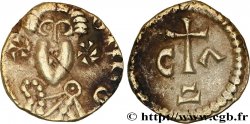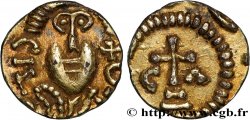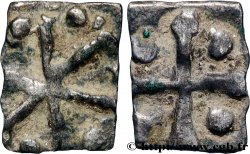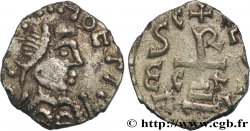bmv_298121 - CHALON - SUR - SAÔNE (CABILONNUM) Triens, monétaire BAVDOMERE
недоступный.
Товар уже продан в нашем интернет-магазине (2017)
Цена: : 2 000.00 €
Товар уже продан в нашем интернет-магазине (2017)
Цена: : 2 000.00 €
Тип Triens, monétaire BAVDOMERE
Дата: n.d.
Монетный двор / Город: 71 - Chalon-sur-Saône
Металл: gold
Диаметр: 13 mm
Ориентация осей монеты: 6 h.
Вес: 1,26 g.
Редкость: R3
Комментарии о состоянии
Triens sur un flan un peu court, mais régulier avec les types de droit et de revers complet, mais de frappe défectueuse. Les coins utilisés étaient probablement rouillés
Происхождение:
Cet exemplaire provient de la collection L. G. ; il a été acheté le 27 octobre 1941
Лицевая сторона
Аверс: легенда: + CABILO - NO FIT.
Аверс: описание: Buste diadémé à droite, manteau avec anneau d’attache à l’angle gauche et globules à l’angle droit ; légende autour.
Обратная сторона
Реверс: легенда: + BAVDOMERE (MONETARIVS).
Реверс: Описание: Croix latine sur deux degrés posés sur un globe, accostée de CA, dans une couronne végétale ; légende autour et listel.
Комментарий
Pour le monétaire BAUDOMERE, les auteurs du MONETA n’ont étudié qu’un seul exemplaire, le Belfort n° 1144, conservé au musée de Chalon-sur-Saône. Notre exemplaire s’en distingue par la légende qui commence à midi et non pas à six heures, mais aussi par le type de revers, avec une croix posée sur un globe et deux degrés alors que le Belfort n° 1144 a une croix chrismée à gauche accostée de C-A rétograde et renversé. Notre exemplaire semble avoir MONETARIVS en plus de BAVDOMERE au revers.
Bien que ce monnayage ait été largement étudié, cet exemplaire semble venir compléter le corpus !.
Bien que ce monnayage ait été largement étudié, cet exemplaire semble venir compléter le corpus !.







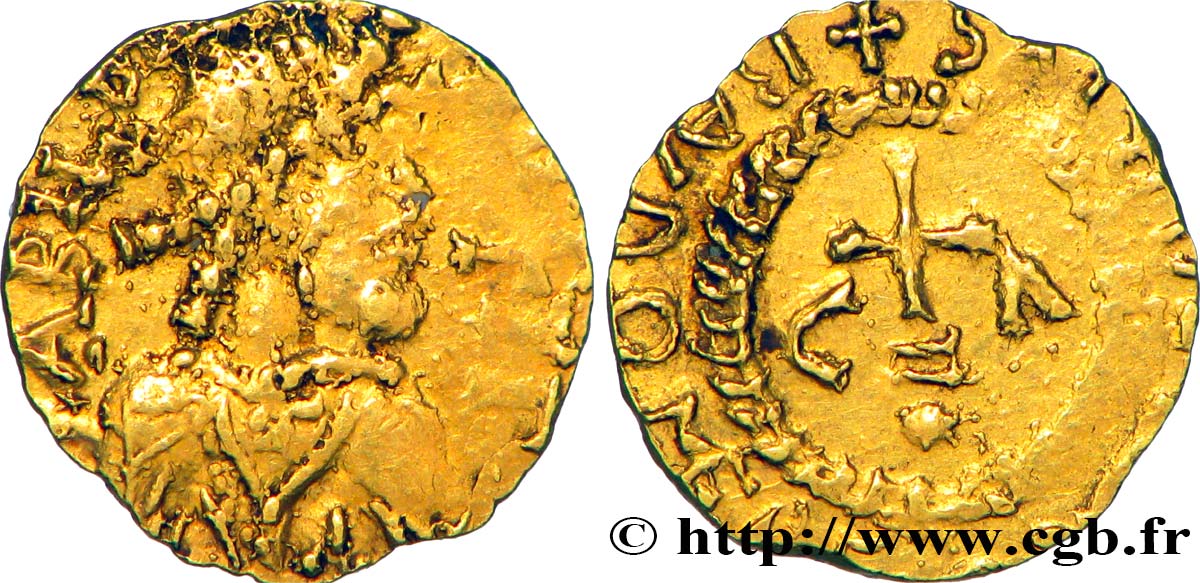
 Cообщить об ошибке
Cообщить об ошибке Распечатать страницу
Распечатать страницу Отправить мой выбор
Отправить мой выбор Задать вопрос
Задать вопрос Consign / sell
Consign / sell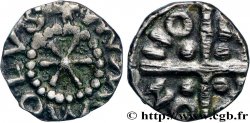
 Информация
Информация